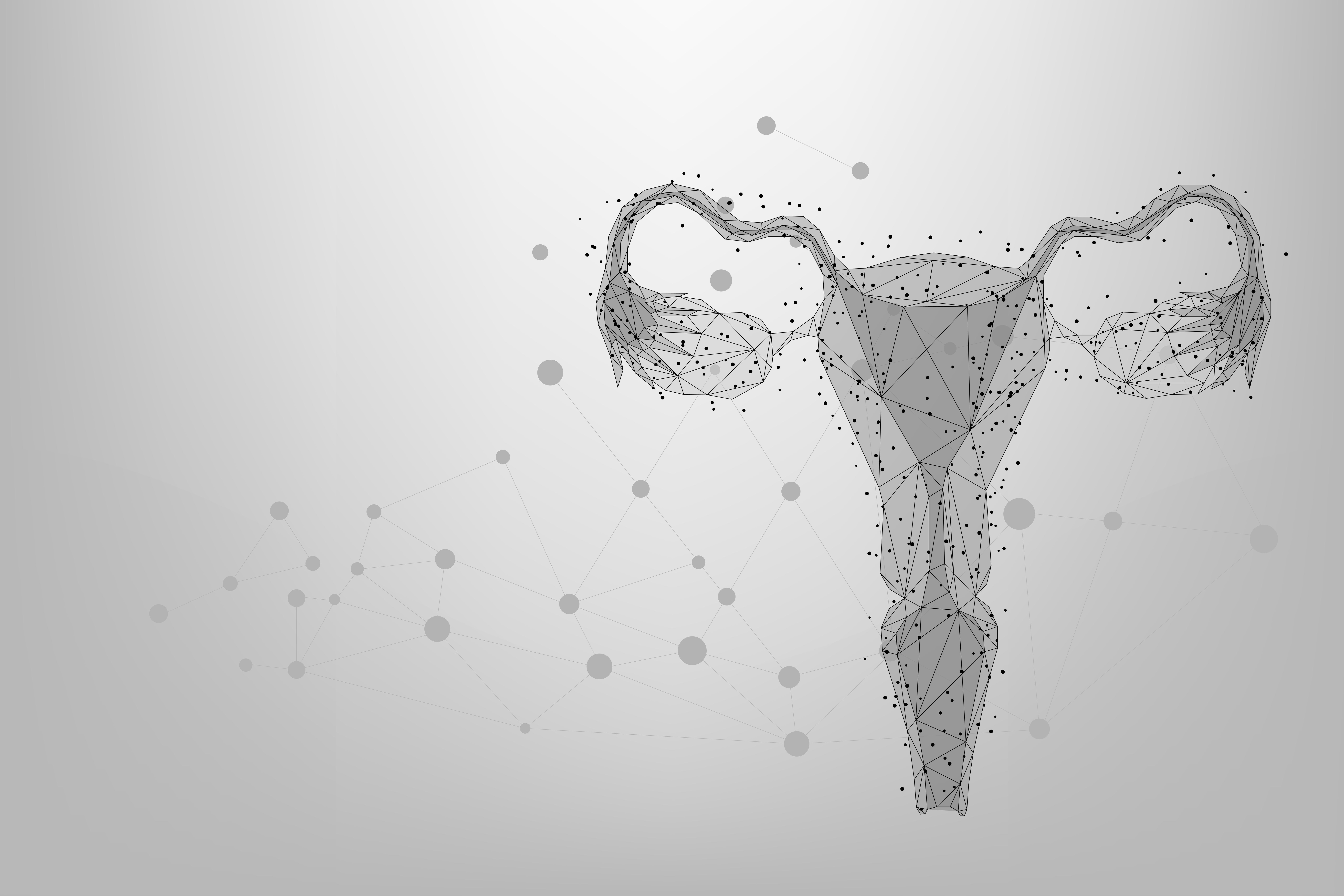MALDI-MS and SIMS Combined to Detect Ovarian Cancer
Scientists from Pacific Northwest National Laboratory in Washington and the University of Connecticut Health in Connecticut have created a new system to detect epithelial ovarian cancer (EOC). Their findings were published in the Journal of the American Society for Mass Spectrometry (1).
Abstract mesh line and point Ovaries. Low poly female reproductive organs uterus and ovaries health care. Polygonal illustration | Image Credit: © Brazhyk - stock.adobe.com

Epithelial ovarian cancer (EOC) is the most common form of ovarian cancer, with approximately 90 of 100 ovarian tumors being epithelial, meaning they are in the surface layers covering the ovary (1–2). There is a poor prognosis rate associated with this disease, with many research efforts conducted to search for improved therapies. One such therapy is ferroptosis-inducing agents.
Ferroptosis is a type of regulated cell death, which is dependent on iron and characterized by lipid peroxidation. According to the scientists, precise mapping of lipids and iron within tumors exposed to such agents can provide insight into ferroptosis processes in vivo, assisting in optimally deploying ferroptosis inducers in cancer therapy. For this experiment, the scientists combined matrix-assisted laser desorption/ionization (MALDI) mass spectrometry imaging (MSI) with secondary ion mass spectrometry (SIMS) to analyze changes in spatial lipidomics and metal composition in ovarian tumors after initial exposure to a ferroptosis inducer.
The tumors were obtained by injecting human ovarian cancer tumor-initiating cells into mice, then adding a treatment using the ferroptosis inducer erastin. SIMS imaging detected iron accumulation in the tumor tissue, while MALDI-MS imaging of the same tissue area revealed chemically distinct lipid regions. One region represented the iron-rich area detected with SIMS, whereas the other region represented the rest of the tissue section. Additionally, bulk lipidomics confirmed the lipid assignments assigned from the MALDI-MS data. As a result, this study demonstrates that multimodal MSI has the ability identify the spatial locations of iron and lipids, although the scientists acknowledge that this topic requires further study.
References
(1) Gorman, B. L.; Taylor, M. J.; Tesfay, L.; Lukowski, J. K.; Hegde, P.; Eder, J. G.; Bloodsworth, K. J.; Kyle, J. E.; Torti, S.; Anderton, C. R. Applying Multimodal Mass Spectrometry to Image Tumors Undergoing Ferroptosis Following In Vivo Treatment with a Ferroptosis Inducer. J. Am. Soc. Mass Spectrom. 2024, 35 (1), 5–12. DOI: https://doi.org/10.1021/jasms.3c00193
(2) Epithelial ovarian cancer. Cancer Research UK 2023. https://www.cancerresearchuk.org/about-cancer/ovarian-cancer/types/epithelial-ovarian-cancers/epithelial (accessed 2023-1-9)
Study Explores Thin-Film Extraction of Biogenic Amines via HPLC-MS/MS
March 27th 2025Scientists from Tabriz University and the University of Tabriz explored cellulose acetate-UiO-66-COOH as an affordable coating sorbent for thin film extraction of biogenic amines from cheese and alcohol-free beverages using HPLC-MS/MS.
Quantifying Microplastics in Meconium Samples Using Pyrolysis–GC-MS
March 26th 2025Using pyrolysis-gas chromatography and mass spectrometry, scientists from Fudan University and the Putuo District Center for Disease Control and Prevention detected and quantified microplastics in newborn stool samples.
Multi-Step Preparative LC–MS Workflow for Peptide Purification
March 21st 2025This article introduces a multi-step preparative purification workflow for synthetic peptides using liquid chromatography–mass spectrometry (LC–MS). The process involves optimizing separation conditions, scaling-up, fractionating, and confirming purity and recovery, using a single LC–MS system. High purity and recovery rates for synthetic peptides such as parathormone (PTH) are achieved. The method allows efficient purification and accurate confirmation of peptide synthesis and is suitable for handling complex preparative purification tasks.







